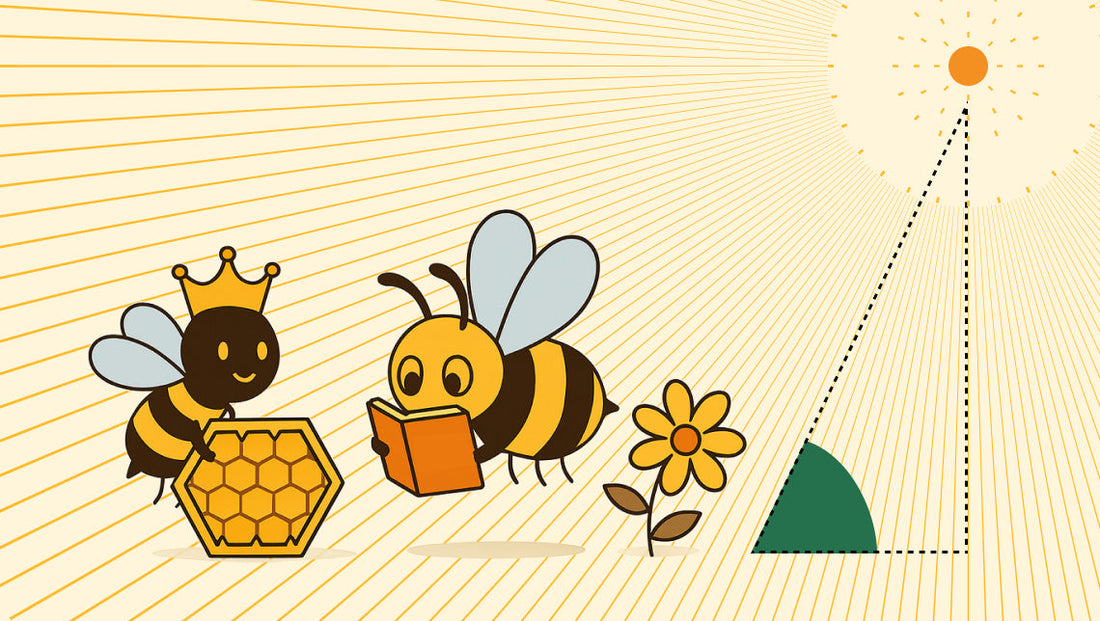
The wonderful world of Honey bees
The amazing world of honeybees is fascinating and inspiring! It is abuzz with lots of interesting things. More importantly, there’s so much to learn and get inspired from!
A typical honeybee lives for about 120 to 150 days. They are barely 15 mm in size. To put that in perspective, that’s about half the size of one of the three divisions on your index finger.
What makes this little insect with such a short life so interesting and so inspiring?
Let’s find out!
1. Honeybees are great managers
Yes, you read it right! Honeybees are great managers. They are highly skilled and efficient managers.
What do we mean by that?
To begin with, honeybees need to find nectar that they will convert to honey. Next, this nectar will have to be converted to honey. After that, the bees will remove the extra moisture from this honey.
And when this honey is ready, they will seal this honey inside the cells of the honeycomb.
While it may not sound like something complicated, it sure is a lot of work for this brown-colored creature. And to make sure their efforts aren’t wasted, they rely on a lot of understanding about how they will work.
These bees tend to work differently during the different stages of their life. They take up multiple roles and perform their duties with the highest efficiency.
2. Honeybees are wonderful communicators
We humans are always on the lookout for newer media and platforms to express ourselves and communicate better.
Honeybees, on the other hand, have an extremely well-established communication system.
Two of their interesting communication systems include a dance. The first is called the waggle dance. Using this dance pattern, which is a relatively sophisticated set of movements, they communicate to one another the sources of nectar.
What’s interesting is that if the source of nectar is very close, the dance pattern changes. It becomes less specific. This dance style has been labelled the round dance.
Another dance movement the honeybees use is called the tremble dance. It’s not as well-known as the waggle dance, Through this dance, the honeyebees ask their fellow honeybees to collect the nectar from the forager bees.
3. Honeybees are smart designers
Have you ever wondered why the cells of a honeycomb are always hexagonal in shape?
No? Well, you’re in for a big surprise!
Let’s see what happens if the shape of a cell is circular. Have a look at the following design.
In the above figure, the orange circles are the circular cells where the honeybees store honey. The space lying idle between the circles is colored grey. This space becomes useless since honey cannot be stored
The above sample diagram has about 21% of the total area in gray color. In other words, the above figure shows about 21% wastage of space.
A square or rectangle would not have this problem, but it will still not be what is called the ideal shape, in terms of efforts, load borne or amount to be stored.
You must remember that constructing a honeycomb is not an easy task. But it’s difficult not to be impressed by the bees’ unusually high understanding of design.
4. Honeybees understand specialization
Yes, honeybees very well understand the importance of specialization.
Each type of the honeybee knows exactly what they are best at and will stick to that job.
A queenbee has two unique functions and it carries out those functions very well. It lays lots of eggs so that the next generation of honeybees doesn’t fall short in numbers. And secondly, it will release chemical scents that will keep the unity of the entire honeycomb intact.
A worker bee has the important role of collecting nectar. You’ll remember that this nectar is later converted into honey that all of us love.
The male bees mate with the queen bee so that the queen bee may lay eggs. Apart from that the male bees (called drones) help regulate the temperature of the hive, by flapping their wings along with the female bees.
This approach of distribution of labor gives honeybees lots of leverage and it’s clearly reflected in their sweet end-results.
5. Honeybees produce more than just tasty honey
Remember, honey has a lot of medicinal properties. Depending upon which flower the nectar came from, honey of a particular will have some unique properties. So honey isn’t just good taste. You can read more about the benefits of honey in our earlier post.
Well, honey is certainly the main thing that honeybees give us. But that’s not all.
Honeybees give us beeswax. In the olden days, beeswax was used to prepare candles (though most of the modern candles are made of paraffin wax, a derivative of petroleum).
Today, beeswax has multiple uses. It is used in a number of cosmetic and skincare products. For instance, it is used in eye shadow, blush and eyeliners. Skincare products using beeswax include moisturising creams and lip balms.
6. And they are beautiful too!
Well, honestly, their looks are certainly one more reason to love these winged insects! Their brown bodies with a special set of wings and a hardworking, courageous nature is certainly fascinating for all of us.
No wonder most of us can’t stop admiring this miniature powerhouse!
Summing up
Honeybees are very important to our environment. But there are many other reasons to respect honeybees. For instance, they are extremely hardworking and organized. They are highly skilled managers and play the role assigned to them very efficiently.
Such traits make honeybees one of the favorite insects (but hey, be careful of their stings!).
What do you think? What’s the reason you love honeybees?

